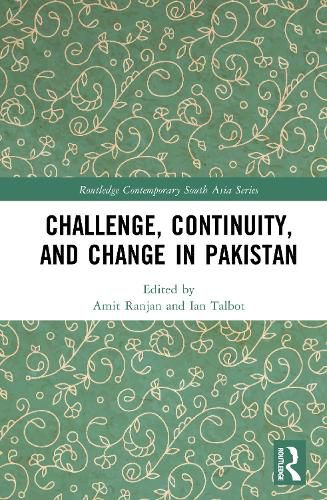Readings Newsletter
Become a Readings Member to make your shopping experience even easier.
Sign in or sign up for free!
You’re not far away from qualifying for FREE standard shipping within Australia
You’ve qualified for FREE standard shipping within Australia
The cart is loading…






This book brings a multi-disciplinary approach to studying Pakistan's contemporary political, social and environmental challenges. It offers insights from various disciplines to show the interconnectedness of many of Pakistan's problems and their historical roots.
The analysis includes issues of political alienation and exclusion, vulnerability to climate change-induced disasters and how such challenges might be mitigated. The case studies in the book reveal that reality is complex and that demographic, social, and technological change is moving apace in Pakistan. This dynamism points to another aspect of Pakistan and its resilience in the face of manmade and natural disasters. An increasingly youthful and urbanised population is challenging social inequalities and power structures whilst the state attempts to respond in old ways to maintain order and stability. The emergence of overseas Pakistani communities and their connectedness with the homeland is another growing development with ramifications for politics and society.
A significant contribution on critical affairs in Pakistan, this book investigates if the country is moving towards a critical crossroads in its development. It will be of interest to historians and political scientists of Modern South Asia, as well as geographers interested in examining impact of climate change.
$9.00 standard shipping within Australia
FREE standard shipping within Australia for orders over $100.00
Express & International shipping calculated at checkout
Stock availability can be subject to change without notice. We recommend calling the shop or contacting our online team to check availability of low stock items. Please see our Shopping Online page for more details.
This book brings a multi-disciplinary approach to studying Pakistan's contemporary political, social and environmental challenges. It offers insights from various disciplines to show the interconnectedness of many of Pakistan's problems and their historical roots.
The analysis includes issues of political alienation and exclusion, vulnerability to climate change-induced disasters and how such challenges might be mitigated. The case studies in the book reveal that reality is complex and that demographic, social, and technological change is moving apace in Pakistan. This dynamism points to another aspect of Pakistan and its resilience in the face of manmade and natural disasters. An increasingly youthful and urbanised population is challenging social inequalities and power structures whilst the state attempts to respond in old ways to maintain order and stability. The emergence of overseas Pakistani communities and their connectedness with the homeland is another growing development with ramifications for politics and society.
A significant contribution on critical affairs in Pakistan, this book investigates if the country is moving towards a critical crossroads in its development. It will be of interest to historians and political scientists of Modern South Asia, as well as geographers interested in examining impact of climate change.